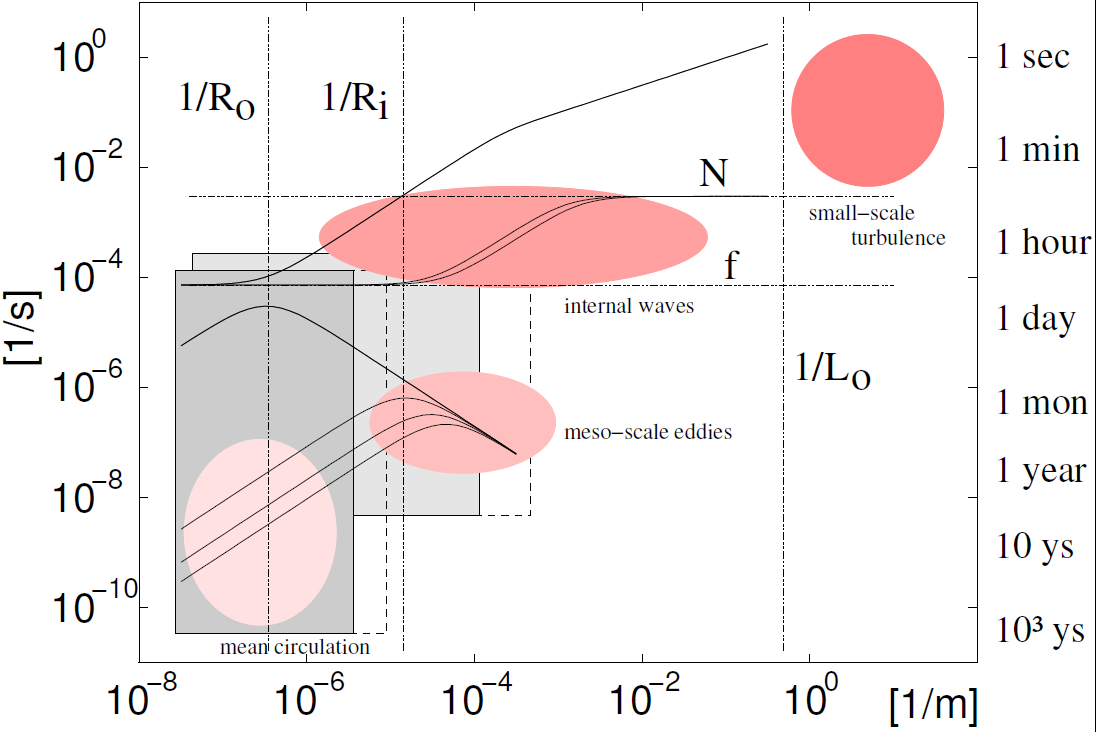Theoretical Oceanography
Theoretical Oceanography aims to describe the ocean dynamics and movements to improve the understanding of the ocean processes by using mathmatical and physical equations. These fundamental and complex equations are simplified and approximated to acquire solutions for certain problems. The solution is often found by using numerical models, which are used, developed and adjusted by our working group for the different scientific problems.
Large-scale ocean circulation and small turbulences
Describing and understanding the large-scale ocean circulation is the primary topic of physical oceanography (Circulationscheme above). Especially the western boundary currents, e.g. the Gulfstream in the North Atlantic, represent a prominent feature of the ocean circulation. Among others, theoretical Oceanographers are investigating these features. The part of the ocean circulation in the climate system is another important research topic.
Important processes also happen on small scales and are the focus of theoretical Oceanographers. Meso- and small-scale variability has time and space scales much smaller than the basin-wide large-scale ocean circulation, but can act as a strong control on the ocean.

Figure: Space-time diagram showing the different dynamical regimes in the ocean as a function of the wave number and frequency. Grey boxes show the possible resolution of current ocean models. The dashed lines represent the increase of these boxes, i.e. increase in model resolution, with the expected gain of computer energy in the next 10 years (after Olbers et al., 2012).
